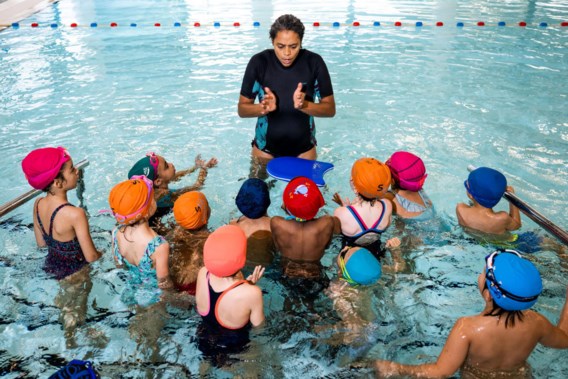Who still learns to swim at school? It is increasingly becoming an exception, according to a study by UCLL. A survey in which 486 schools participated shows that 28 percent have cut back on swimming education in the past year.
“Schools do not simply cut lessons for one school year,” says Tine Sleurs, physical education lecturer at the UCLL teacher training college. “They often prune in several school years at the same time.”
Why are schools taking their classes to the swimming pool less and less often? “The cost is an important reason,” says Sleurs. “Seven in ten schools say that the price has gone up in the past year: this could either be the price of the swimming pool itself or the price of bus transport. The distribution is extremely wide: there are schools that receive free transport and can use the swimming pool, and there are those that have to pay 10 euros per child per swim.”
However, the cost is not the only problem: “There is a whole list of concerns,” says Sleurs. “Half of the schools have too few teachers. The regular classroom teacher often has to teach swimming lessons. In most cases together with a physical education teacher, but that is not the case for all schools.”
No fewer than nine in ten schools also indicate that they are confronted with large groups of students who rarely or never go to the swimming pool outside school hours. “Learning to swim outside of school is a real luxury for a large group of children,” says Sleurs.
As a result, there are enormous differences in level in the classroom between children who have already learned to swim well and children who lack the absolute basics. “But because they have to go to the pool with such large groups, they cannot respond to that difference in level.”
‘Swimming arm’
If children do not learn outside of school and if swimming lessons at school lose their quality, the consequences are obvious. “We are in danger of creating a generation that is swimming poor,” says Sleurs. “You also get a vicious circle. Because of all the problems that schools experience, they may start to think: ‘Oh well, is it worth all that effort?’.” But it should be the opposite: it should encourage everyone to fully commit to this. Learning to swim is a basic right for children and a very important skill.”
Learning to swim is also effectively included in the final objectives of primary education. “Students must be able to move freely and playfully in the water, they feel safe in the water and can swim,” is how the bar they have to cross is described.
“In secondary education, swimming is no longer a compulsory part of the lessons,” says Sleurs. “In the Netherlands, in 1985 they completely removed school swimming from the educational program on the assumption that children have plenty of opportunities to learn it outside of school. Unfortunately, they see the consequences of that. Children from families with low incomes or with a migration background in particular can no longer swim, with all the consequences that entails. Don’t let us fall into that same trap. It remains absolutely essential that learning to swim remains part of the final objectives and of our education.”

